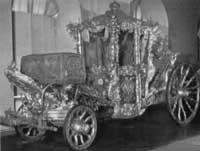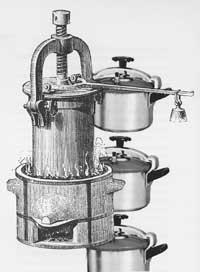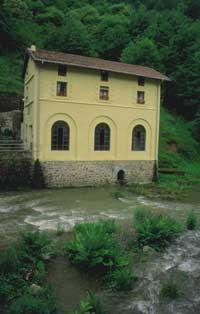XIX. 20th century: society and technology
1996/07/01 Bandres Unanue, Luis Iturria: Elhuyar aldizkaria
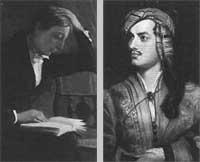
However, scientists worked hard and, in the field of biology, for example, through totally empirical observation and experimentation methods, and regardless of any previous natural philosophy, they began to deepen their knowledge of nature.
But the relationship between science and thought has always been great. In the field of positive sciences, specifically in physics, the consequences on the mathematical structure of electrical phenomena, the mechanical view of heat, the prevalence of the wave theory of light with respect to corpuscular theory or the influence of spectroscopic research of radiation on thought is more than clear. In the field of chemistry, both the atomic theory and the first useful manifestations to understand the internal dynamics of reactions, or the foundations of organic chemistry, which are the achievements of this epoch, influenced decisively the development of thought.
But before this explosion of scientific knowledge, what philosophical idea was at the base? Was this great leap in the knowledge of nature merely the result of a newer and more practical idea of natural reality? or affected socio-cultural changes? We can ask a lot of questions of this kind. Therefore, seen as an ephemeral process, offering some lines to the human knowledge of the epoch will not be at all useless.

Initially, romantic ideas faced the rationalism of encyclopedists. As a result of this struggle, the ideological basis of Restoration emerged. On the other hand, liberalism thought that this new current could be a counterrevolutionary movement. But as Romanticism advanced, these two currents joined in another without greater precision. As romantic ideas, that is, individuality and irrationality, increased, and when counteracting any regulations, they unintentionally joined the trend contrary to liberal tradition.
Moreover, since the formation and culmination of romanticism appeared in France, the individuality of Latino peoples became more evident. Therefore, despite Romanticism and Western liberalism, the summit of the XIX. In the third decade of the 20th century, we must distinguish the beginning of the romantic ideology that retained a certain effective dimension from the knowledge of an advanced liberal reaction based on naturalism.

In England romanticism developed in a conservative and puritan society. At first, in this society all that was outside the framework of the usual peaceful and rational customs and customs was not seen with good eyes. But gradually they adopted new attitudes that exceeded the limits of the field: J. The lyricism of Keats (1795-1821) and the poetic rupture of Lord Byron (1787-1824). The latter, throughout his life, refused in favor of conventionalism. In Germany, Novalis (1772 1801), E. Th. H. Hoffmann (1776-1822) and H. von Kleist (1777-1811), educated with their dreams in Alar idealism. They made the way of the poet Heine (1797-1856). Heine's influence was remarkable, especially in France, and he moved to this country when the reaction of 1830 occurred.
The English and German models gave rise to French romanticism. At first he was rationalist and academic, but after overcoming the last obstacles of classical tradition, he managed to prevail. Chateaubriand (1768-1848), A. de Lamartine (1790-1896) and V. Hugo (1802-1885) helped this achievement with his lyrical works. V. Hugo introduced the manifesto in his drama “Cromwell” and through the artistic norms he explained in “Hernani”, he achieved the recognition of the liberal bourgeoisie on the eve of the revolution of 1830.
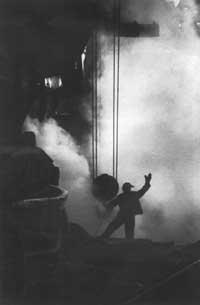
Alongside them stand out Delacroix in plastic arts and Weber in music. After this French renaissance, Spain, Italy, Hungary, Bohemia, Poland, Romania, etc. In these last countries it became his abertzale spirit and his liberation. In this cultural environment, especially between 1830 and 1840, the society of the peoples of Europe and the internal structure of the economy gave rise to a profound change that greatly affected the construction of the human sciences.
But other factors such as the results of economic science influenced this genesis of the human sciences. XIX. Until the 19th century, producers and traders only knew the simplest forces of nature, while at the beginning of this century, within the framework of a productive and capitalist industry, after the first results of the thrust of machinism, they began to see things in a very different way.
The British Isles were industrialized before the rest of Europe. Several factors influenced this industrialization, including: While the continent was improving and enhancing the use of the new world of technology, England undertook the accumulation of conditions to carry out this new human action, the exploitation of the colonial market and the construction of new spaces of wealth. Along with all this, agricultural factors contributed to changing the production techniques and the situation of workers.
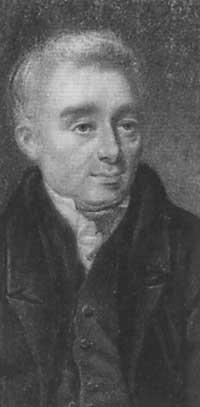
The socio-economic change, the technical renaissance and the agrarian changes derived from it propitiated the industrial development and the XIX. The development of cities in the 20th century was also known. The consequence of this revolution was the disaster of small farmers who abandoned their small plots and had no choice but to resort to large cities. Although the creation of urban proletarians brought with it the material reputation of ancient civilization, it also provoked a social imbalance: along with the enormous power of technology, there was a huge moral retreat.
XIX. The 20th century man, combining science and technology, had the opportunity to better investigate the mechanisms of natural phenomena. Until that time it had at its disposal more fertile, unknown or useless sources of energy. The most widespread energy source in the Middle Ages was the animal, although river and wind sources were also used. However, in this century, due to the expansive tendency of gases and vapors by heat effect, these elements became the main artificial source of motor energy by replacing air and water currents.
XIX. The main technical trait of the twentieth century has been the dominion of energy, so it has been baptized as “dependent on steam”. Its use, especially in the field of transport, caused a very rapid and radical change in the way of life: in this field and after an average of twenty kilometers per hour of maximum speed for thousands of years, steam raised this speed barrier considerably. XIX. At the beginning of the 20th century the first ideas about the locomotive appeared. The miners immediately realized their importance, as it would help them overcome their transportation problems.
George Stephenson, conquering the invention of Trevithick and relying on Hendley's trials on steam transport and rail travel, built in 1829 the first locomotive after overcoming a thousand technical problems. His name was “Rocket” and he was on the Manchester-Liverpool line. After its launch, the news spread shortly. Beginning in 1837, in the continent, Belgium and France, and especially in the latter, the railways have been constantly evolving. In Britain there was also a rapid expansion of the train: in eighteen years ten thousand kilometres of railway were built.
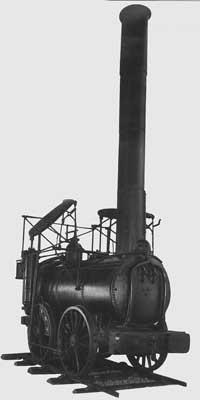
Together with the train, steam ships were pressed. In 1807 Fulton launched the first regular service of perfume boats. Initially, the wheels that were carried to the sides were supported to push the boats, but thanks to the work done to improve, soon the advantages of the propellers were seen. So gradually the wheels were replaced by propellers. In this field we must remember the names of Sauvage and Dallery. These were based on the idea of “windmill”, in which the movement of the church can be compared to that of a screw that enters the liquid or the skirt. In 1838 “Sirius” and “Great Western” were able to cross the Atlantic with propellers and without sail.
At the same time, navigation methods and tools were improved and the improvement of the naval industry was scientifically aware of the progress made. When the telegraph and some sanitary advances were added to all this, navigation had a great boost.
If we focus on energy, hydraulic turbines played a very important role in this century. With the outbreak of the industrial revolution and the increase in energy needs, the inadequacy of the old hydraulic wheels was evident. From medieval to 18th century. Until the end of the 20th century, these old wheels knew a very scarce advance.
XIX. Thanks to the work carried out in the early 20th century, the hydraulic turbine was able to see the light in this century. It was soon observed that the performance of this turbine was very high, much higher than that of the old wheels. The hydraulic turbine is a type of hydraulic body with vertical axis; while in the hydraulic wheels only the weight of the water was used, in the turbines a much greater energy transformation is achieved through channels conditioned by the water, that is, of the arms.
Apparently it was Leonardo da Vinci who had and drew the first ideas of the hydraulic turbine. Later the Segner of Besson, Pohl and Göttingen did their work in this field. All these works were compiled, summarized and completed by the French engineer Burdin in a report of high technical value in which he proposed the name of hydraulic turbine. Based on this report, Fourneyron was able to build the first hydraulic turbine in 1832.
The performance of this turbine was 70%, so this achievement has been compared with that obtained by Watt. Fourneyron's turbine was immediately accepted; its advantages and performance contrasted with hydraulic wheels and paved the way for the use of some still discarded hydraulic power sources. However, the highest level reached when Fourneyron's invention, along with the dynamites and alternators, was used in the production of electric energy, since the most economical way to have electric energy was the use of hydraulic energy.
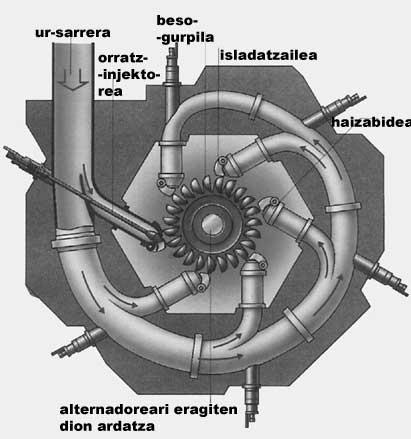
After the Fourneyron turbine, in 1936 Fontaine was invented and in 1850 Francis appeared replacing thermal turbines, which were much more expensive to use than hydraulic turbines. This allowed the installation of industries in certain territories without mineral goods, with all the sociological and economic consequences that this entails.
The idea of the steam turbine, that is, of a machine without plunger, in which the liquid generates a direct rotation movement without any alternate movement, came beforehand. This idea appeared, among other things, in the steam sphere of the Greek Heron or in the steam turbine of Branca. However, in those times it was impossible to get an engine capable of using it industrially, since for this the knowledge about the manufacture of metals and machinery had to be greater. Explosion engines also belong to this time.
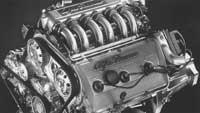
The explosion engine was born in 1860, despite the 18th century. In the 20th century the idea of something similar arose: exploiting gunpowder in a cylinder to obtain mechanical energy. But once this path was discarded, the steam occupied the domain and the use of the energy that emerges inside a cylinder was marginalized and forgotten. XIX. In the nineteenth century, the engineers Street and Labon appropriated this idea, explained the idea of a new engine and in 1860 the engineer Lenoir could do one of these characteristics: adapting all the technical elements, modeled a three-horsepower engine. As an explosive he used a mixture of air and light gas: controlling the entrance of air and gas, with a succession of thin layers inside, he created a smooth operation of the machine. Lenoir therefore opened the door to the path of an easily transportable source of energy. Soon the light gas gave way to oil, directing the motor development we have known in this century.
The consequences of this technical revolution were quickly expelled. To begin with the distances were smaller, with all the advantages and disadvantages that this entails. The transport of goods acquired large dimensions. In parallel, companies were created for the machinery sector, as well as for the accumulation of huge capital needed for the construction of bridges, railways or tunnels. The advances in steel, both for obtaining empty steels and for the use of phosphorous iron minerals, gave rise to the hegemony of iron in industries, leaving wood in the background. Needless to say, in this process the converter made by Bessemer in 1865 and the Siemens-Martin kiln had special strength in the steel industry.
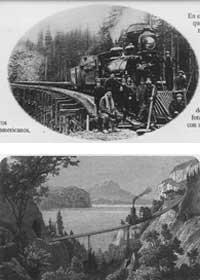
To conclude this somera explanation of the technical changes that supported all the social and economic changes that occurred in this century, we must mention the use of electricity. To begin with in 1826 the Mors apparatus allowed to bring the news from one point of the world to almost any other point. Years later, in 1876, Graham Bell invented the phone. Thanks to all this and the underwater cables, everyone was connected. On the other hand, by transforming hydroelectric forces into sources of light energy and transport, it gave rise to the birth of a new unknown world.
All the technical advances presented in this section generated profound social and habits changes, as well as a new mentality to problems. Therefore, faced with problems that were not yet investigated or investigated in an extreme way, human beings adopted a new position, opening new episodes of research to those that have later been known as “Humanities”.

Gai honi buruzko eduki gehiago
Elhuyarrek garatutako teknologia




